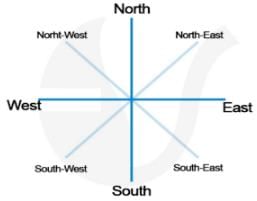EMRS Librarian Mock Test - 3 - EMRS MCQ
30 Questions MCQ Test EMRS TGT Mock Test Series 2025 - EMRS Librarian Mock Test - 3
Van der Waal’s equation is related to which of the behaviour of which of the following?
Saturated carbon compounds can form which types of chain structures?
I. Straight chain
II. Branched-chain
Which of the cells of connective tissue secrete antibiotics?
Which is the first ever comic book launched by WWF-India ?
For a time difference of two hours, the longitudinal distance will be equal to ________.
Which of the following properties are exhibited by the covalent compounds?
I. Have high boiling and melting point as compared to ionically bonded molecules
II. Are poor conductors of electricity.
III. Have weak inter-molecular force.
In the following question assuming the given statements to be true, find which of the conclusion among given conclusions is/are definitely true and give your answers accordingly.
Statements:
B > C; C < D; D > E; E > F
Conclusions:
I. C < F
II. B > D
In the following question assuming the given statements to be True, find which of the conclusion among given conclusions is/are definitely true and then give your answers accordingly.
Statement:
P > S ≥ M = L < J = N
Conclusions:
I. L < N
II. P > M
III. S = L
One day afternoon Arun and Mani were sitting in a garden and facing each other.Mani’s shadow fall exactly towards Arun’s right, Which direction was Mani facing ?
P is 15m to the west of Q. R is 13m to the south of Q and 5m to the east of S. T is 20m to the north of S.T is 10m to the east of U…….
Q.
In which direction R with respect to P
If southeast become North, North-east become West and so on.What will be the West ?
N is more intelligent than M. M is not as intelligent as Y. X is more intelligent than Y but not as good as N. Who is the most intelligent of all ?
Q. In a queue, Rahul is fourteenth from the front and John is seventeenth from the end, while Alisha is in between Rahul and John. There are 48 persons in the queue, how many persons are there between Rahul and Alisha?
Specialized programs that allow particular input or output devices to communicate with the rest of the computer system are called ____.
The primary purpose of software is to turn data into:
Confidential recording, scientific synthesis, and occupational therapy are the characteristics of :
Clinicians generally use two different procedures to develop case studies. One is clinical case study and the second one is :
A psychologist studied the individuals and compared the jobs they were employed in. Which method was he using :
Which of the following applies to the experimental method?
Appreciation, love and affection are part of the following needs of a child.
|
5 docs|20 tests
|

















